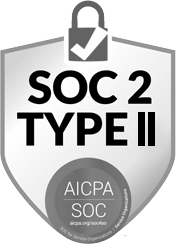November 24, 2023
Sorry, Mobile Phone Number Lists Aren’t Legal.
Unless a customer has given you their mobile phone number and consented to using it, organizations in Canada are limited to calling landline phone numbers that are “publicly available” – which basically means they’re listed in a “white pages” or other public directory. It’s illegal to sell or rent cell phone lists in Canada.
Fortunately for businesses that utilize telesales as a contact strategy, there are still 4.5 million households with active landlines installed. That’s just shy of 30% of all households in Canada.
Here’s a provincial breakdown of available landline phone numbers by province.

Newfoundland Wins! But Wait …
Newfoundland and Labrador has the highest percentage of available telephone numbers per household, followed closely by the other maritime provinces: New Brunswick, PEI, and Nova Scotia.
At the other end of the scale, Alberta and British Columbia have the lowest percentage of listed telephone numbers.
Ontario and Quebec are in the middle, with coverage averaging ~35%.
Don’t Forget the National Do Not Call List.
Another national law in Canada requires that any organization making phone calls to consumers be registered with the Canadian Radio-television Telecommunications Commission, more fondly known as the CRTC. And while there are a few exceptions (like of course for politicians who made these laws) most are required to pay a hefty licensing fee and then remove the numbers listed on the national Do Not Call List (DNCL).
All the rules and the associated fees are on the CRTC’s website.
There are currently 2.8 million phone numbers permanently listed on the Do Not Call List that non-exempt telemarketers must suppress.
Newfoundland Still Wins!
In Newfoundland, telesales programs can still target 41% of households after suppressing the numbers on the DNCL. As the graph below shows, it only gets worse. In Alberta the targetable population falls to a meager 12% of households.

For more information on Canada’s national privacy laws and how they apply to obtaining phone numbers, the rules are spelled out in the Canadian Personal Information Protection and Electronic Documents Act (PIPEDA). There’s also provincial privacy legislation that goes further than PIPEDA in some cases; predominantly in Quebec. Be sure to check out the laws in the province you’re focused on when planning your campaigns.
by Sarah Lightfoot, Cleanlist Product Manager
About the data: The data presented in this report was summarized from ResponseCanadaTM Consumer, Canada’s largest and most up-to-data privacy friendly consumer database. To learn more about the database or for licensing information, contact sales@cleanlist.ca.
Cleanlist is Canada’s largest customer data company. We clean, enrich, and validate business and consumer data. We’re also experts in data-driven document composition and Canada’s largest data provider for digital and offline marketing. To learn more, visit us at Cleanlist.ca.




